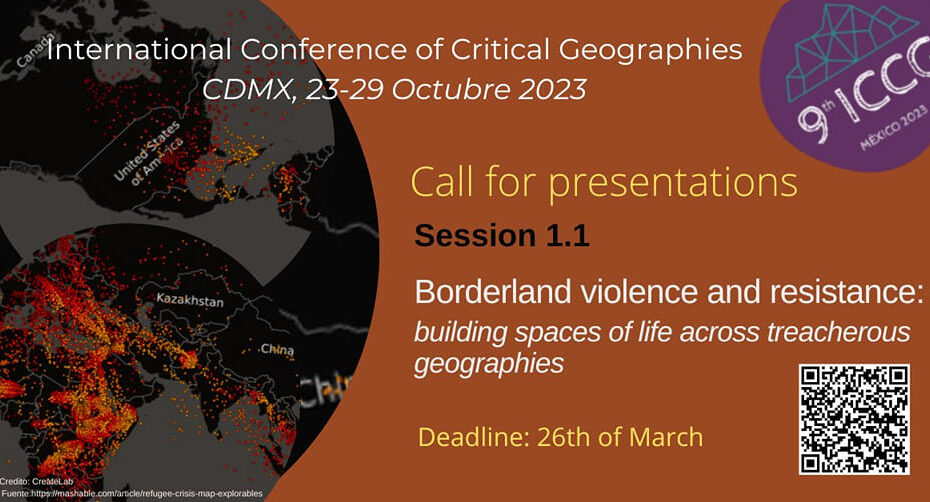Abstracts accepted in English and Spanish.
Ilaria Giglioli
Frida Güiza
Edgar Córdova Morales
Beth Bee
Border scholars and activists have increasingly highlighted connections between sites of border fortification across the world, arguing that similar rationales and practices of border fortification travel between different locations. However, practices of resistance towards borders also travel between borders through global activist networks, demonstrating that borders can also be spaces of encounter, interconnection, and crafting of new political possibilities.
In recent decades, borders have emerged as some of the most dynamic, busy, contested and violent spaces in the world. As crucial ‘hinges’ between the Global North and South, where thousands of migrants face life and death situations, they play a key role in the geopolitics of global migration. Geographically distant and historically distinct, these spaces are nonetheless interconnected, and are being increasingly transformed into “treacherous geographies” produced by liberal violence and techniques of control and immobilization. Thus, we argue that it is necessary to analyze these spaces in an interconnected and conjoined manner, and – by so doing – shed light on global processes of bordering, and practices of resistance to borders.
Existing academic and journalistic writing on the global border regime has adopted a “birds eye view” of borders. Thus, we know less about grounded experiences at these borders, the practices of solidarity and interconnection between activists located at these different sites, and the forms of ‘border thinking’ that emerge through these practices.
This session aims to be a laboratory of discussions about comparative and interconnected processes of border fortification as well as the practices of solidarity and resistance that emerge at these sites. We invite papers that address multiple borderlands, but we also welcome papers empirically focused on one border, but that adopt a global perspective.
